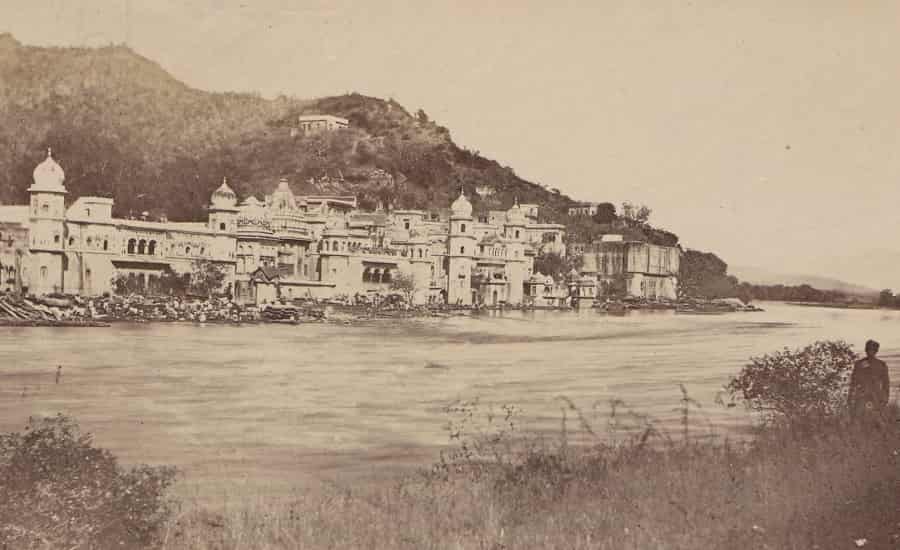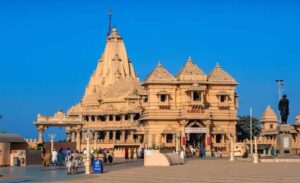History of Haridwar
Haridwar, often referred to as the “Gateway to God,” is a historic city in the northern Indian state of Uttarakhand. Situated on the banks of the holy River Ganges, it holds immense religious and cultural significance in Hinduism. The city’s name, “Haridwar,” is a combination of two Sanskrit words: “Hari,” meaning Lord Vishnu, and “Dwar,” meaning gateway. This reflects its role as a gateway to the divine, where pilgrims come to cleanse their sins and seek spiritual enlightenment. The history of Haridwar is deeply intertwined with India’s ancient civilization, religious practices, and socio-cultural evolution. This article will take you on a journey through the rich and diverse history of Haridwar, spanning over several millennia.

Ancient History (circa 1500 BCE – 600 CE)
The roots of Haridwar’s history trace back to ancient India, where it finds mention in various sacred texts, such as the Vedas and the Mahabharata. It is believed that the city’s origins can be traced to the time of King Bhagirath, a legendary figure in Hindu mythology who is credited with bringing the sacred River Ganges down to Earth to purify the souls of his ancestors. This event is central to the city’s identity, and a popular legend claims that the Ganges split into four streams at Haridwar, symbolizing the four sacred pilgrimage sites for Hindus.
During the Vedic period, Haridwar was known as “Mayapuri” and served as a prominent center for learning and spirituality. It was frequented by sages, scholars, and spiritual seekers. The city gained further importance as a part of the Kuru Kingdom, which was associated with the epic Mahabharata. According to legend, it was at Haridwar that Lord Krishna advised the Pandavas after the Kurukshetra war.
Classical Period (circa 600 CE – 1200 CE)
Haridwar’s significance as a religious and cultural center continued to grow during the classical period. The establishment of temples, ashrams, and bathing ghats along the Ganges further solidified its status as a place of spiritual importance. The Chinese traveler Xuanzang, who visited India during the 7th century CE, wrote about Haridwar in his travelogue, noting the presence of Buddhist monasteries and the city’s vibrant religious life.
Haridwar’s importance also lies in its association with the Shaivism and Vaishnavism sects of Hinduism. The city’s temples, such as the Chandi Devi Temple and the Mansa Devi Temple, were constructed during this period and are dedicated to the worship of the goddesses Chandi and Mansa Devi, respectively.
Medieval Period (circa 1200 CE – 1750 CE)
The medieval period witnessed the rise and fall of several dynasties in the Indian subcontinent. Haridwar came under the rule of various empires, including the Delhi Sultanate and the Mughal Empire. During this time, the city continued to thrive as a religious center, and the construction of numerous temples and ghats along the Ganges continued.
One of the most notable developments during this period was the establishment of the Kumbh Mela, one of the largest religious gatherings in the world. The Kumbh Mela is celebrated in Haridwar every 12 years and attracts millions of pilgrims from all over India and beyond. It is a significant event in Hinduism and is believed to cleanse the soul of sins. The first recorded Kumbh Mela in Haridwar dates back to the 13th century during the reign of King Vikramaditya.
The Mughal Emperor Akbar visited Haridwar in the 16th century and was struck by its religious fervor. He ordered the construction of a grand ghat, known as the Harki Pauri, which remains one of the most iconic and revered spots in Haridwar. The ghat’s name, “Harki Pauri,” translates to “the footsteps of the Lord,” and it is believed that Lord Vishnu left his footprint here.
Colonial Era (circa 1750 CE – 1947 CE)
Haridwar, like the rest of India, saw significant changes during the colonial era. The British East India Company’s presence in India led to the gradual erosion of indigenous rulers’ authority, and Haridwar came under British influence.
The British recognized the city’s religious importance and made efforts to improve infrastructure and accessibility. The construction of the Upper Ganges Canal, also known as the Ganga Canal, was a major project undertaken during this period. Completed in the mid-19th century, it transformed the region by providing a consistent source of water for irrigation and facilitating trade and transportation.
Post-Independence Period (1947 CE – Present)
After India gained independence in 1947, Haridwar became a part of the newly formed state of Uttar Pradesh. Later, in 2000, when Uttarakhand was carved out of Uttar Pradesh as a separate state, Haridwar became a prominent district within it.
In recent decades, Haridwar has seen significant urbanization and modernization, as it attracts not only pilgrims but also tourists interested in its rich history and cultural heritage. The city has expanded, and infrastructure has improved to accommodate the growing number of visitors.
Today, Haridwar remains a bustling city that retains its spiritual and cultural essence. It is a place where ancient traditions and rituals continue to thrive alongside modern developments. The Kumbh Mela, held every 12 years, and the Ardha Kumbh Mela, held every six years, are still major events that draw millions of devotees and tourists from around the world.
Conclusion
The history of Haridwar is a testament to the enduring power of spirituality and culture in India. From its ancient origins as a place of pilgrimage and learning to its status as a vibrant religious center in modern times, Haridwar has played a crucial role in the spiritual life of the nation. Its association with the sacred River Ganges, the Kumbh Mela, and the various temples and ghats make it a unique and revered destination for people seeking solace, purification, and spiritual enlightenment. Haridwar’s rich history is a reminder of the deep roots of Hinduism and the continuous evolution of Indian culture.
Suggested to Read:





